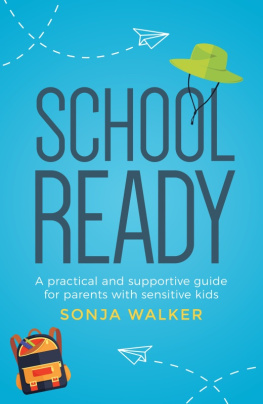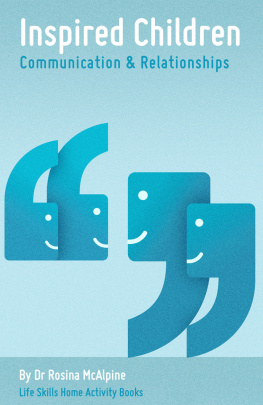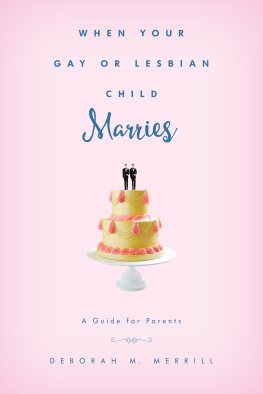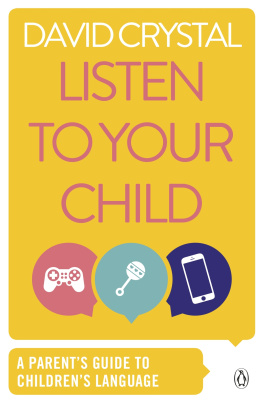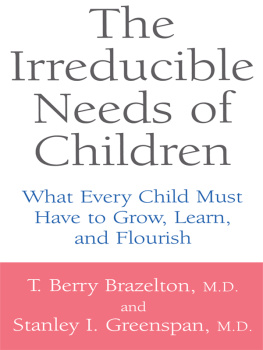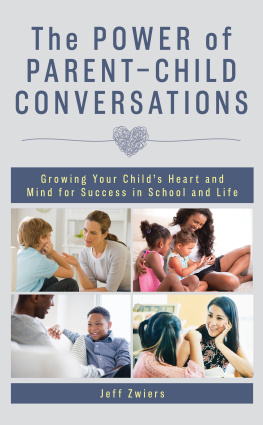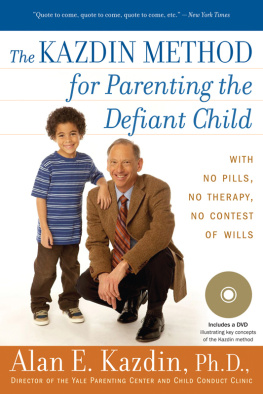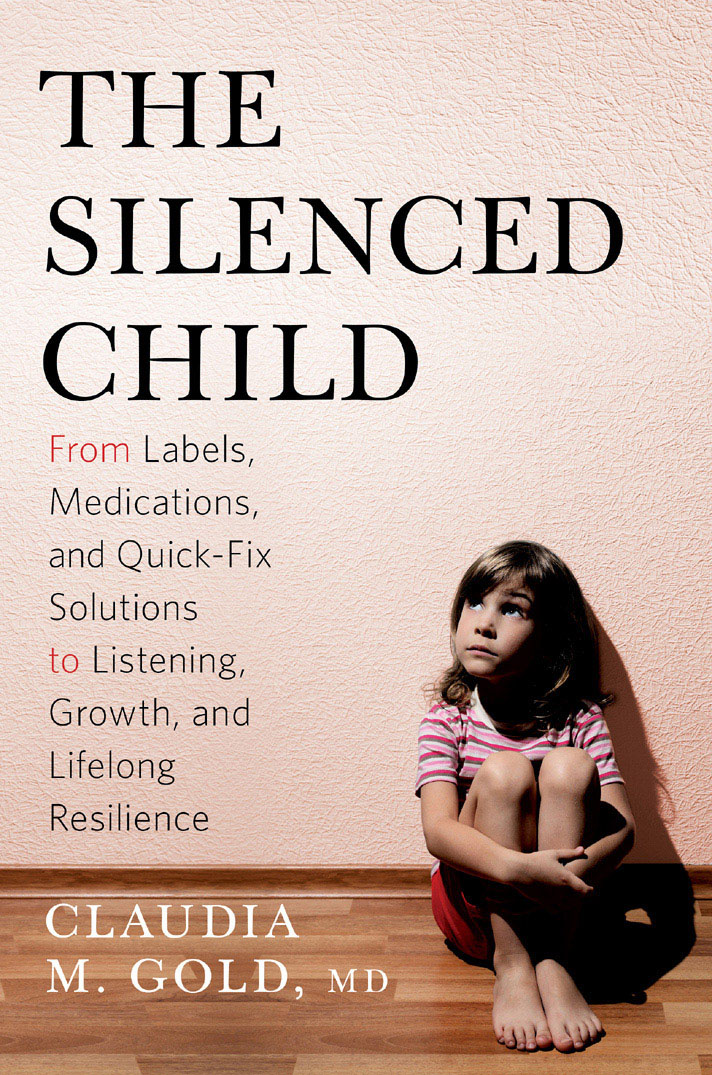
Also by Claudia M. Gold, MD
Keeping Your Child in Mind

Copyright 2016 by Claudia M. Gold, MD
All rights reserved. No part of this publication may be reproduced, stored in a retrieval system, or transmitted, in any form or by any means, electronic, mechanical, photocopying, recording, or otherwise, without the prior written permission of the publisher. Printed in the United States of America. For information, address Da Capo Press, 44 Farnsworth Street, 3rd Floor, Boston, MA 02210.
Designed by Janelle Fine
Set in 11.5 Goudy Old Style by the Perseus Books Group
Cataloging-in-Publication data for this book is available from the Library of Congress.
First Da Capo Press edition 2016
ISBN: 978-0-7382-1840-3 (e-book)
Published as a Merloyd Lawrence Book by Da Capo Press, A Member of the Perseus Books Group
www.dacapopress.com
The information in this book is true and complete to the best of our knowledge. This book is intended only as an informative guide for those wishing to know more about health issues. In no way is this book intended to replace, countermand, or conflict with the advice given to you by your own physician. The ultimate decision concerning care should be made between you and your doctor. We strongly recommend you follow his or her advice. Information in this book is general and is offered with no guarantees on the part of the authors or Da Capo Press. The authors and publisher disclaim all liability in connection with the use of this book.
The families described in this book are composites of many actual families. All names and identifying details have been changed. Any similarity to actual persons is coincidental.
Da Capo Press books are available at special discounts for bulk purchases in the U.S. by corporations, institutions, and other organizations. For more information, please contact the Special Markets Department at the Perseus Books Group, 2300 Chestnut Street, Suite 200, Philadelphia, PA 19103, or call (800) 810-4145, ext. 5000, or e-mail .
10 9 8 7 6 5 4 3 2 1
For my father
There is only one cardinal rule. One must always listen to the patient.
Oliver Sacks in Migraine
New York Vintage 1999
Table of Contents
Guide
Contents
T hree-year-old Cara, in a bright polka-dotted dress and slightly uneven pigtails, smiles impishly in to the camera. You see shes standing on the kitchen table, her proud yet concerned grandmother, Anne, says to me. She shows me the photo and explains that Cara was standing on the table because she never listens, and runs away when her mother tries to take her picture.
Anne knows that I am a pediatrician and expert in behavior problems, so, after showing me the picture, she mentions that her granddaughter might have ADHD (attention-deficit/hyperactivity disorder). She wont sit in the circle with the other kids for the whole story time. Theyve started an evaluation.
Anne is my neighbor. Out gardening on the first warm day of spring, she saw me walking my dog and invited me in for tea. As I listen to her story, I nod in shared concern, and she goes on. Weve known each other for many years, so the conversation flows easily. Its hard, she says, because Mindy (her daughter) just broke up with her boyfriend. So, shes a single mom, I say. Yes, and she works late and lets Cara stay up until eleven so she can be with her. After a pause I comment, So, Cara must be tired in school. Caras grandmother goes on to explain that Cara is the youngest in her class of mostly four-year-olds. She begins to wonder whether all these things she is telling me might be related to the problems Cara is having in school. Her tone shifts.
Then she reflects, Actually, Mindy was like that as a child. She took everything inall the lights and soundsand could be easily distracted. But after some struggles during those years, she found her way.
During my visit I feel a shift in Annes thinking. Simply by talking with me, a captive audience with whom she has a long-standing relationship, she goes from describing her granddaughter in terms of a disorder and evaluations to reflection about Cara, to wondering, Why is she behaving that way?
Anne again looks at the giddy expression of her granddaughter, trapped on the kitchen table. She sees the picture, cute as it is, as a kind of sign that things may feel out of control for Cara. She shares with me a concern that perhaps her daughter is too stressed and needs more help from her. Maybe, she says, if Mindy had a bit of time to herself, she could be more patient with Cara. Anne decides to offer her daughter a day of babysitting.
When her grandmother was given the opportunity to wonder about the meaning of that photo, she could understand that Caras behavior was a way of communicating. Being heard and recognized in this way gave Anne the opportunity to see Cara not as a child with a possible disorder, but instead one who is expressing her needs in the best way she can.
This brief vignette captures the shift from focus on behavior to curiosity about the meaning of behavior, a shift that, as we will see throughout this book, is essential for supporting healthy emotional development. It captures how that shift can occur when we protect space and time for listening to each other.
The thesis of this book is that a culture of advice, quick fixes, parent training, and behavior management, together with a rapidly escalating use of psychiatric labels and medications, may actually interfere in development if parents are not supported in listening to what their childs behavior is communicating.
The evidence for this thesis, and so the backbone of this book, is in the stories themselves, stories (with details changed to protect privacy) that have been told to me by parents and children over the course of twenty-five years practicing pediatrics. Behind every behavior problem is a story that gives meaning to that behavior.
The book aims to speak to all who have opportunity to support children like Cara, including family members as well as professionalspediatricians, social workers, psychiatrists, teachers, childcare workers, and a range of others. It speaks to all those who are in a position to help set any child who hits the inevitable bumps in the road on the journey of growing up, on a path of growth, healing, and resilience.
Our humanity lies in our history, in the stories we tell of our lives, and the meaning we make of our experience. Stories can be found in families of every kind all over the world. Some are heard. Many are not.
Simply Listening
I would not give a fig for the simplicity this side of complexity, but I would give my life for the simplicity on the other side of complexity.
Oliver Wendell Holmes
The listening described in this book refers to an act that is simple, but on the other side of complexity. This kind of listening can heal. It can help children develop a healthy brain and mind. True listening comes from a stance of not knowing, in which we are open to imagining our way into anothers feelings, even when they are not our own. Listening requires a willingness to stay present with difficult, intense feelings while at the same time conveying a feeling of safety, offering another person a sense of being held securely. Most important and most challenging, listening requires being mindful of how our own feelings, memories, and experiences are stirred up; to be fully present, we must be able to manage our own reactions.








